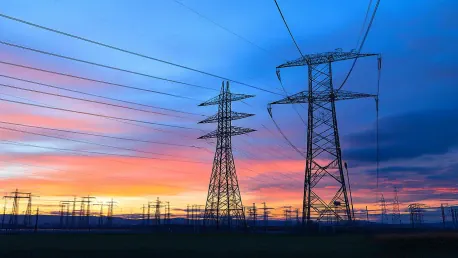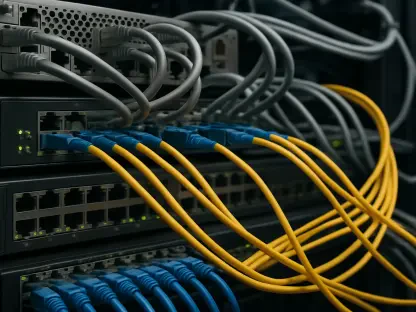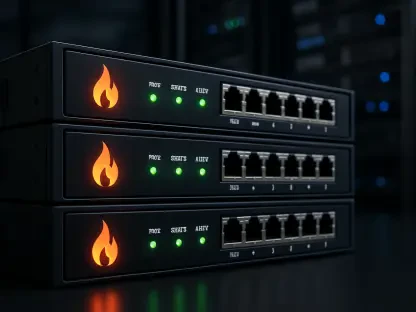The data center sector has witnessed significant growth in energy demand in 2024, prompting data center operators and utilities to adopt an “all of the above” approach to power procurement. This strategy involves exploring a mix of traditional and innovative energy sources, including nuclear, renewable energy, fossil fuels, and emerging technologies. As demands continue to rise, the industry has faced both challenges and opportunities in securing the necessary power to sustain operations. Investments in transmission infrastructure have also become paramount to ensure that the increasing energy needs are met efficiently.
Rise in Energy Demand and Diverse Approaches
The unrelenting appetite for more data storage and processing power has led to a substantial rise in energy consumption by data centers across the globe. Addressing this demand, operators have opted for a varied mix of energy sources to ensure a reliable and sustainable supply. This move comes from a pressing need to balance environmental concerns with the practical and urgent needs of continuous operations. Traditional sources such as fossil fuels remain in use, but there is a significant push toward exploring alternative power sources like nuclear, geothermal, and tidal energy systems.
In particular, the exploration of geothermal and tidal energy systems represents a forward-looking perspective on power procurement strategies. By diversifying their energy portfolios, data centers aim to mitigate risks associated with energy supply disruptions and price volatility. Furthermore, as renewable energy sources sometimes fall short in meeting the power requirements, there is renewed interest in natural gas, a fossil fuel seen as a more reliable stopgap. This multi-faceted approach to energy procurement not only ensures continuity but also aligns with sustainability goals set by many data center operators.
Nuclear Energy Advancements
Nuclear energy has made significant strides in 2024, particularly in the data center industry. A notable example is AWS’s acquisition of Talen Energy’s 960MW Cumulus data center campus in Pennsylvania, which is powered by the adjacent 2.5GW Susquehanna Steam Electric Station. This transaction highlighted some regulatory challenges, as the Federal Energy Regulatory Commission (FERC) rejected the Interconnection Service Agreement (ISA) due to cost-shifting and reliability concerns. Despite these hurdles, the deal underscored the growing interest in nuclear energy as a dependable power source for data centers.
Other technology giants like Microsoft and Meta are also investing in nuclear energy. Microsoft, for instance, secured a 20-year Power Purchase Agreement (PPA) with Constellation Energy for 837MW from Pennsylvania’s Three Mile Island plant. Small modular reactors (SMRs) have gained attention as well, with companies like Google, Equinix, and AWS entering into agreements with SMR developers for projects in the United States. AWS has gone a step further, making substantial commitments including agreements with Energy Northwest, Dominion Energy, and an equity investment in Gen IV SMR developer X-energy to back new nuclear initiatives.
Despite uncertainties surrounding traditional nuclear markets and SMR delivery timelines, nuclear energy remains a significant focus in 2024. The preference for nuclear energy signals the industry’s need for large-scale, reliable power solutions to support its burgeoning energy demands. However, the viability and timely deployment of nuclear solutions continue to be closely monitored, as stakeholders navigate regulatory, logistical, and technological challenges in this evolving energy landscape.
Renewable Energy Procurement
The push for renewable energy has remained strong among data center operators, with hyperscalers leading the charge through extensive Power Purchase Agreements (PPAs). By the end of the third quarter of 2024, the US data center industry had secured a staggering 50GW of clean energy. Leading this charge were solar and wind power, contributing 29GW and 13GW, respectively. Major renewable energy PPAs included Microsoft’s 446MW wind projects with RWE in Texas, accompanied by several significant deals in Europe where Amazon, Google, Microsoft, and Meta dominated the market.
In Europe, Spain has emerged as the largest market for data center PPAs, driven by lucrative solar and wind deals. Recent legislation in Spain has expedited the processing of environmental impact statements, attracting more data center operators looking for clean power agreements. This legislative support has made Spain an attractive destination for companies aiming to boost their renewable energy portfolios and reduce their carbon footprints.
This commitment to renewable energy underscores the sector’s broader sustainability goals. By continuing to diversify their renewable energy investments, data center operators can reduce their environmental impact while securing a steady and, theoretically, more predictable energy supply. Despite challenges such as weather-dependent variability, the focus on solar and wind power remains a testament to the industry’s dedication to sustainable practices and long-term energy solutions.
Fossil Fuel Dilemma
Despite notable advancements in renewable and nuclear energy, the fossil fuel dilemma persists as US utilities continue to explore traditional energy sources to meet escalating power needs. One such example is Southern Co., which is considering extending the operational life of its 3,450-MW Plant Bowen coal-fired facility in Georgia. Additionally, Hallador Energy has signed a term sheet with a data center developer for coal energy supply, illustrating that coal, despite its environmental drawbacks, remains a fallback option for some.
Natural gas, on the other hand, appears to be a more favored fossil fuel due to its relative cleanliness compared to coal and its ability to provide a reliable power source. Entergy, for instance, has agreed to power a Meta data center through new natural gas turbines—a move that underscores the sector’s reliance on this fossil fuel to bridge gaps left by renewable energy sources. Estimates suggest that natural gas demand from data centers could reach up to six billion cubic feet per day by 2030. Moreover, behind-the-meter agreements with natural gas providers are increasingly common, with companies like Sharon AI expanding its agreement with New Era Helium.
While fossil fuels continue to play a role in meeting current energy demands, this reliance raises questions about long-term sustainability. As the data center industry grows, the challenge will be to balance immediate energy needs with the imperative of reducing carbon emissions and fostering a more sustainable energy landscape. These choices highlight the ongoing tension between reliability and environmental responsibility within the sector.
Emerging Technologies
Emerging power technologies have started to gain momentum in the data center sector, offering new avenues for sustainable and reliable energy sources. Among these, geothermal energy stands out, with Microsoft and G42 planning to power a data center using Kenya’s Olkaria geothermal plant. This method leverages the earth’s internal heat, providing a stable and eco-friendly energy source. Geothermal energy offers the advantage of consistent power generation, unlike solar and wind, which are subject to weather conditions.
Tidal energy is another promising technology, as demonstrated by Iron Mountain’s partnership with SeaQurrent to supply tidal energy for its Amsterdam data center. Tidal energy harnesses the predictable movement of ocean tides to generate electricity, presenting a consistent and largely untapped power source. Although still in nascent stages, projects like these exhibit the industry’s willingness to explore innovative energy solutions that can diversify and stabilize their power supply.
Hydrogen, another emerging technology, has had limited coverage but holds potential for the future. Keppel Data Centers has signed an agreement to purchase liquid hydrogen for its Singaporean facilities, marking a step towards integrating this clean energy source. Hydrogen fuel cells can provide a high-density, zero-emission energy source that, if scaled appropriately, could significantly reduce the carbon footprint of data centers.
These emerging technologies are mostly in the pilot phase, but they indicate a burgeoning interest in finding sustainable alternatives to traditional energy sources. While their widespread adoption may still be on the horizon, the initial investments and pilot projects signal a transformative shift in how data centers might meet their future energy needs.
Transmission Infrastructure Challenges
In 2024, the data center industry has seen a remarkable spike in energy demand, driving both operators and utilities to embrace a comprehensive approach to power procurement. This “all of the above” strategy incorporates a blend of energy sources, spanning nuclear power, renewable energy options such as solar and wind, traditional fossil fuels, and cutting-edge technologies. The rapid escalation in demands presents a dual role of challenges and opportunities as the industry works to secure the electricity necessary for dependable operations.
The quest for reliable power has spotlighted the importance of upgrading transmission infrastructure, which is crucial to meet the escalating energy requirements efficiently. Investments are being funneled into this area to ensure that the extensive energy consumption is supported without interruption. Additionally, as operators delve into an array of power options, the industry is also evaluating the environmental impacts of these choices. Renewables are being heavily favored for their sustainability, though the reliability of traditional energy sources can’t be overlooked.
In summary, the data center sector in 2024 is at a pivotal juncture, balancing growth in energy demand with investments in infrastructure and a diverse energy mix. Addressing these needs is essential for ensuring the continuity and efficiency of data operations now and in the future.









